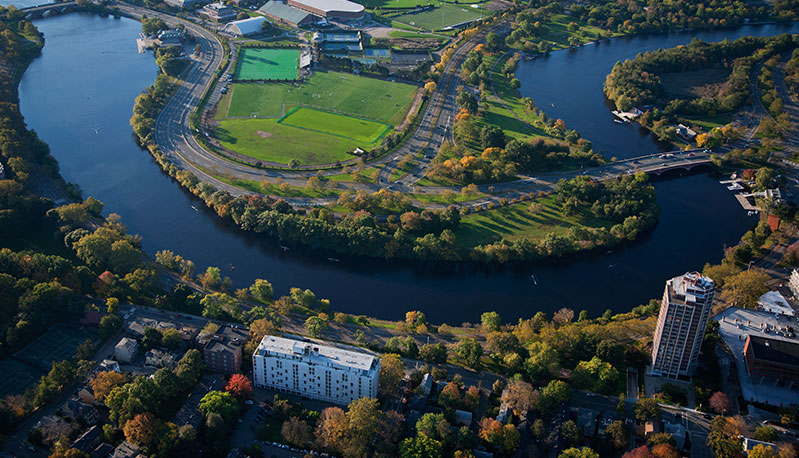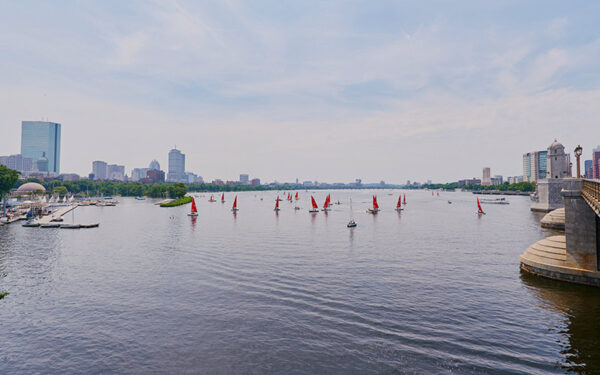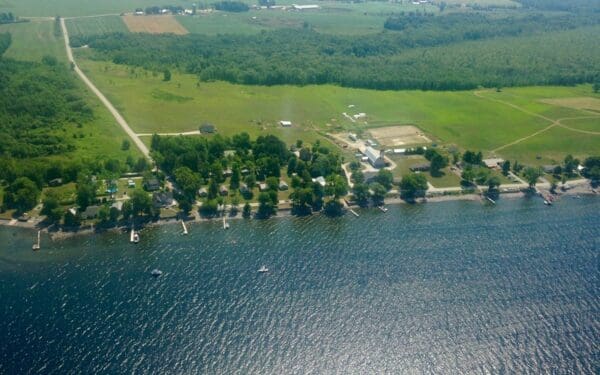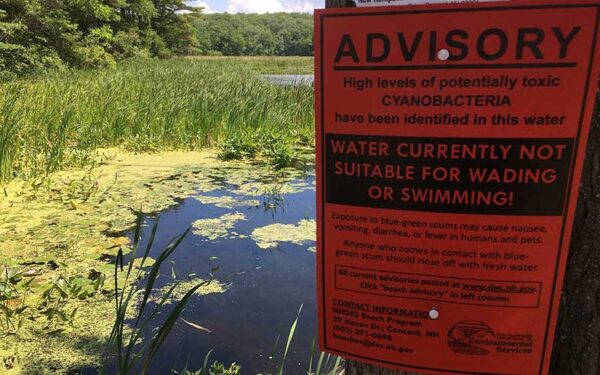
Closing the Clean Water Gap and Making All Polluters Pay
Take a stroll along the Charles River on a July weekend and you’ll see why it’s considered one of the busiest watersheds in the country. Joggers and walkers tread its shoreline paths; canoes, kayaks, and sculls ply its waters; and recreational boats drift along its currents.
But this summer scene is not as idyllic as it seems. Far too often, these beautiful afternoons by the water are marred by toxic blue-green algae blooms. Those blooms don’t just smell and look bad – they’re bad for our health and that of our children, our pets, and the fish, plants, and other aquatic life that call the Charles home.
Progress – But Not Enough
It wasn’t so long ago that the Charles was one of the dirtiest rivers in the country. Today, thanks to CLF, the Charles River Watershed Association (CRWA), and others, Massachusetts’ iconic river is on the mend. But despite these decades- long clean-up efforts, says Margaret Van Deusen, CRWA’s Deputy Director and General Counsel, “we still have a ways to go overall to rejuvenate the Charles River and its water quality.”
The biggest issue facing the river today, says Van Deusen – and the underlying cause of those toxic algae blooms – is phosphorus pollution from stormwater runoff.
Along the Charles’ 80-mile course from Hopkinton to Boston Harbor are thousands of acres of strip malls, office parks, and other industrial development, along with their flat roofs and huge parking lots. “Eighty percent of the land area in Greater Boston today is paved,” says CLF’s Christopher Kilian, Vice President for Clean Water. “All those water-resistant surfaces add up to trouble when it rains.”
Back when the Charles flowed through a largely natural landscape, rainwater was absorbed by the ground, which acted as a natural filter for pollutants before the water eventually drained into the river. Today, though, stormwater gushes off those roofs and parking lots, picking up debris, fertilizer, and other harmful pollution along the way. The result: a contaminated soup of dirty water draining into the Charles, Boston Harbor, and other rivers, lakes, and streams across New England.
Stormwater pollution is hurting the Charles River, the fish and wildlife that depend on it to be healthy – and the communities that pay when it’s not. – Chris Kilian, Vice President, Clean Water & Healthy Forests
A major ingredient in that soup, phos- phorus feeds those massive blue-green algae outbreaks. This is just one reason why the Charles is so often subject to advisories for fish contamination and unsafe boating. Phosphorus also fertilizes harmful invasive species such as water chestnut, which in turn crowds out native plants, creating a cycle of deteriorating water quality throughout the watershed.
Phosphorus and stormwater pollution are entirely preventable problems. With effective implementation of the Clean Water Act by the Environmental Protection Agency, this entire destructive cycle could be halted.
Bringing All Polluters into the Clean Water Act Fold
It’s no mystery to EPA who the biggest stormwater polluters are. “On a per acre basis, industrial, commercial, and high- density residential areas contribute the greatest amount of phosphorus to the Charles River – 62 percent of the total phosphorus load to the lower Charles River alone,” says Van Deusen.
EPA not only knows who the biggest privately owned stormwater dischargers are, it also has the legal authority and obligation to hold them accountable. In fact, the Clean Water Act requires these stormwater polluters to obtain a permit for their discharge. But, despite decades of experience that prove that permits work – polluters directed by a permit lower their dirty stormwater discharges drastically – EPA has failed to enforce this basic tenet of the law.
If polluters are able to flout the law with EPA’s knowledge, then who’s on the hook for their damaging stormwater pollution? The cities and towns – and, by extension, taxpayers – that line the Charles’ shores. That’s why, in April, CLF and CRWA joined together to file a federal lawsuit against EPA to force the agency to live up to its legal responsibility. “Municipalities are being held to an appropriate clean water standard, but one which they are already struggling to meet,” says CLF’s Kilian. “Meanwhile the commercial and industrial facilities that are a huge part of the problem get to continue polluting the Charles with no consequences.”
The ultimate bottom line, continues Kilian, “is that stormwater pollution is hurting the Charles River, the fish and wildlife that depend on it to be healthy, and the communities that pay when it’s not.” A successful outcome to this lawsuit will mean that hundreds of commercial, industrial, and institutional polluters along the river’s route will finally be required to obtain permits. Those permits would not only control the stormwater pollution those businesses can discharge – and with it, phosphorus loads to the river – but also ensure they are paying their fair share of the costs for its management.
That outcome wouldn’t be a success just for the Charles, however. A win here in New England could set a groundbreaking legal precedent nationwide, in which commercial and industrial polluters could be held accountable for their stormwater discharges in watersheds across the country – setting many more of our rivers, lakes, and streams on the path to being fishable and swimmable for all.



